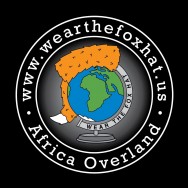Leaving Etosha via Namatomi (the eastern gate) was a bit of a wrench – it had been such a tremendous experience.
We headed further east towards Tsumeb & ‘Bushman’ country.
For decent showers etc we stopped at Kupferquelle rest camp.
The place was like a Spa in Switzerland: 18 months old, great bar, beautiful grassy camping pitches, showers & facilities like a 5* hotel and a full-size Olympic pool with lane markers and starter-blocks!
Didn’t take any pictures – bit embarrassed at how luxurious it was when we’re supposed to be adventurous overlanders.
We hooked up with a S African / Kiwi couple who pitched next to us, and watched Scotland play The Springboks (S Africa) in the bar.
Fortunately Helene had her flag.
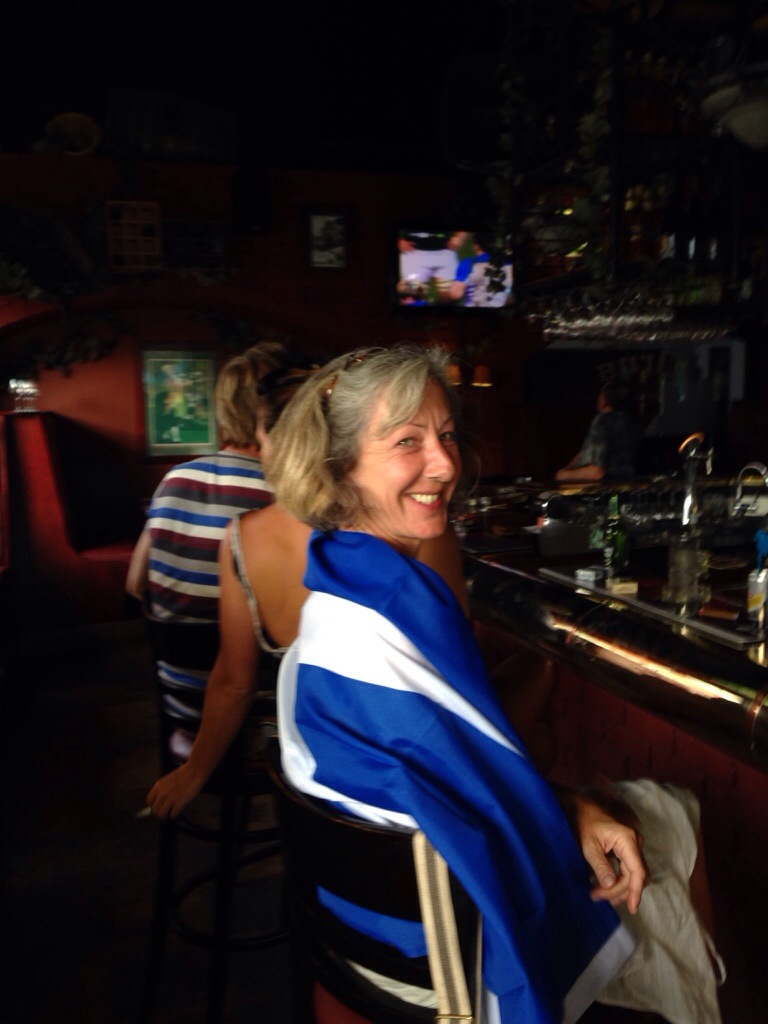
Unfortunately Scotland got hammered 28-0!
The 4 of us got invited to Marnie’s house for a Brai after the game. We’d never met him before – he was just also watching the rugby.
We got there about 9.30pm, ate around 12.30-1am, got back to the camp around 3am and ended up having a race to put the roof-tents up.
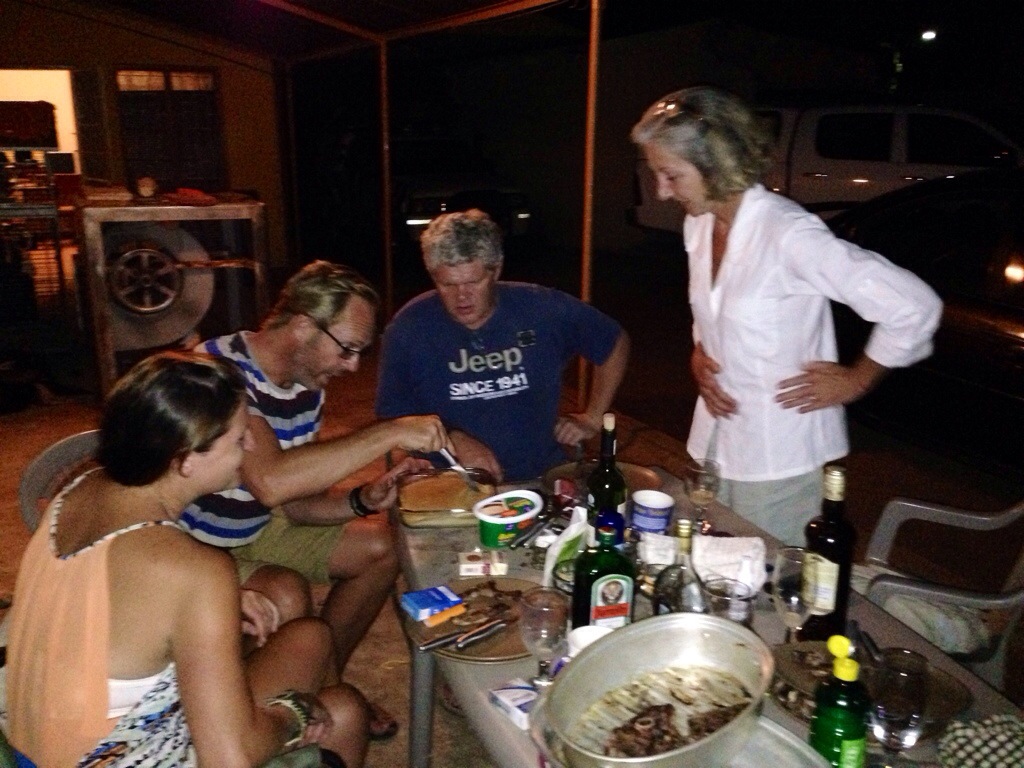
Not a great idea when you’re had at least one drink too many.
As we left Tsumeb the next day we stocked up with supplies for a few nights in the remote north east of Namibia .
Supplies are great value for ‘westerners’ out here:
Sirloin steak $6 per kilo
Wine $3-$6 per bottle
1 litre of fresh fruit juice $2
6 bottles of beer $4-$5
1 litre of milk $1
We took the heavily corrugated back roads to see the Hoba Meteorite.
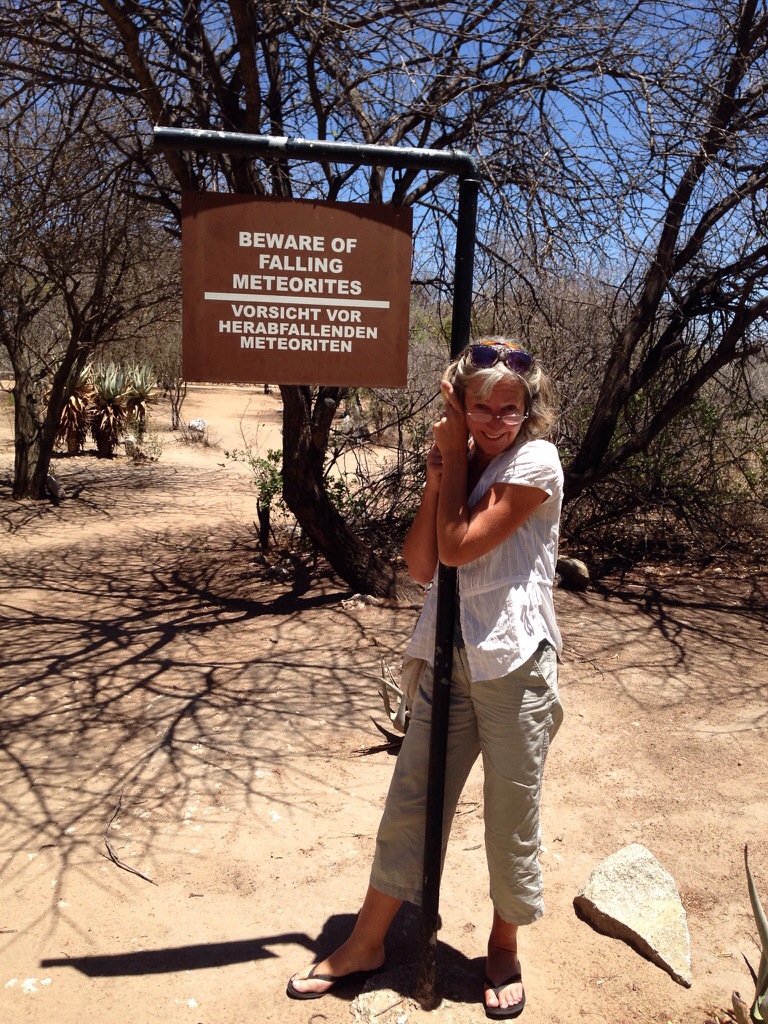
The largest surviving single piece in the world – and surprisingly impressive – almost solid iron and weighing 50 tonnes.
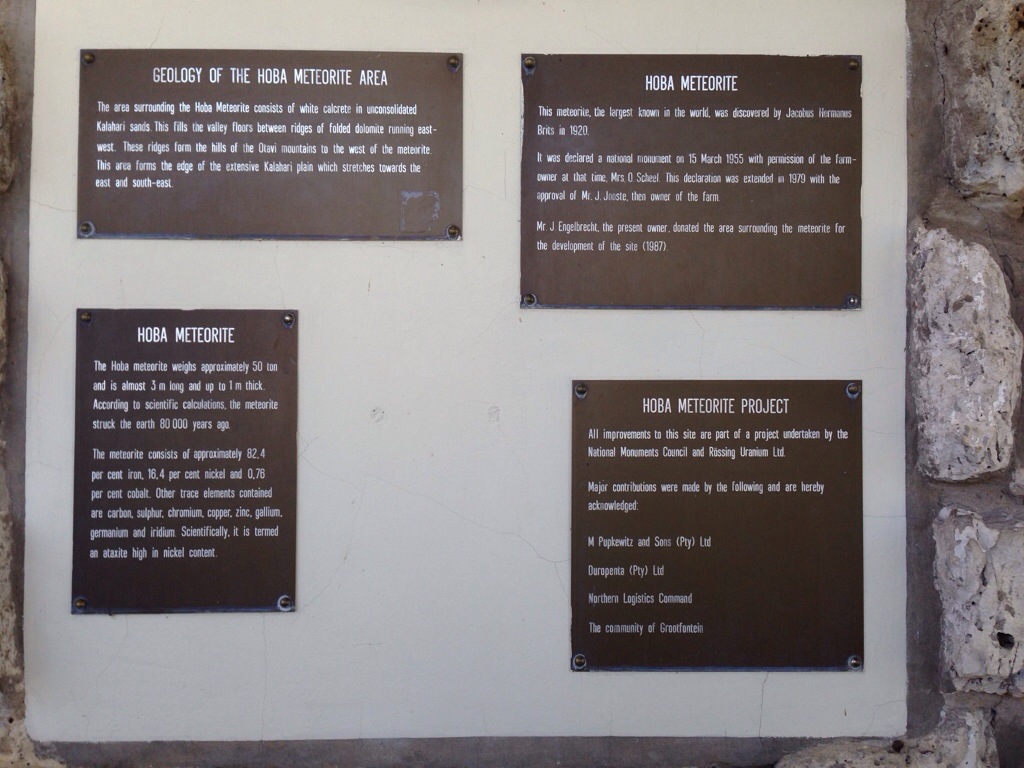
It’s only in recent years that it’s been protected – you can see where vandals (or staff) have previously tried to cut bits off (with little success) to sell before it was declared a National Monument.
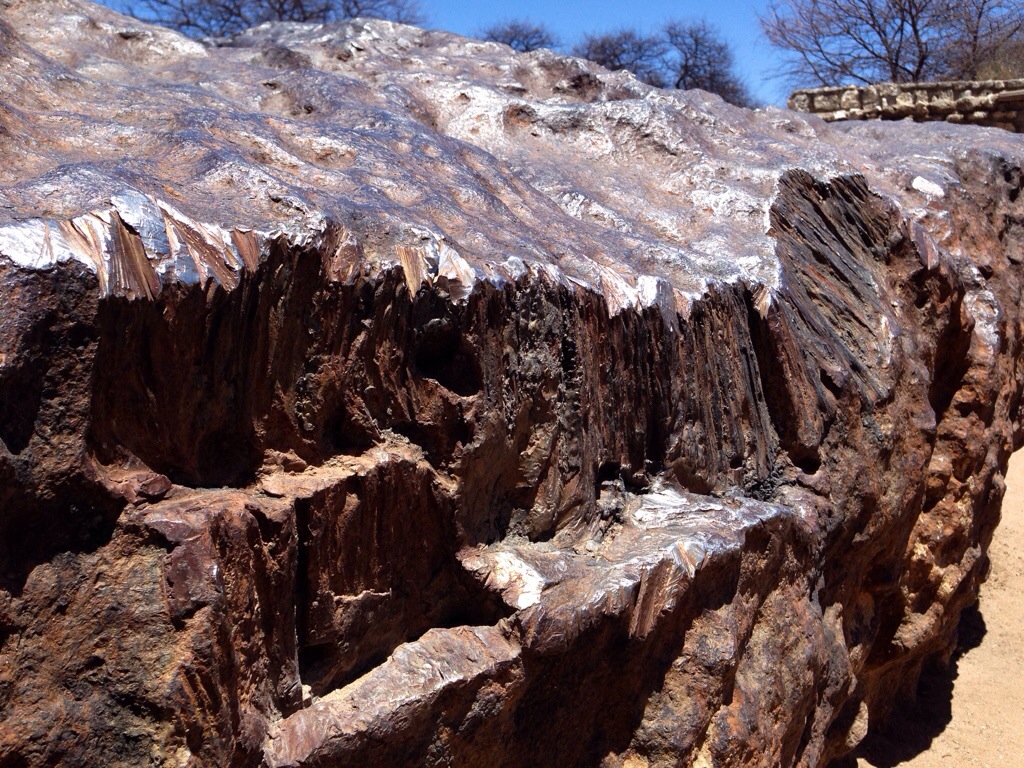
Considering that most shooting-stars are sized between a pea and a golf ball, can you imaging something this size hurtling towards the Earth (let alone hitting it).
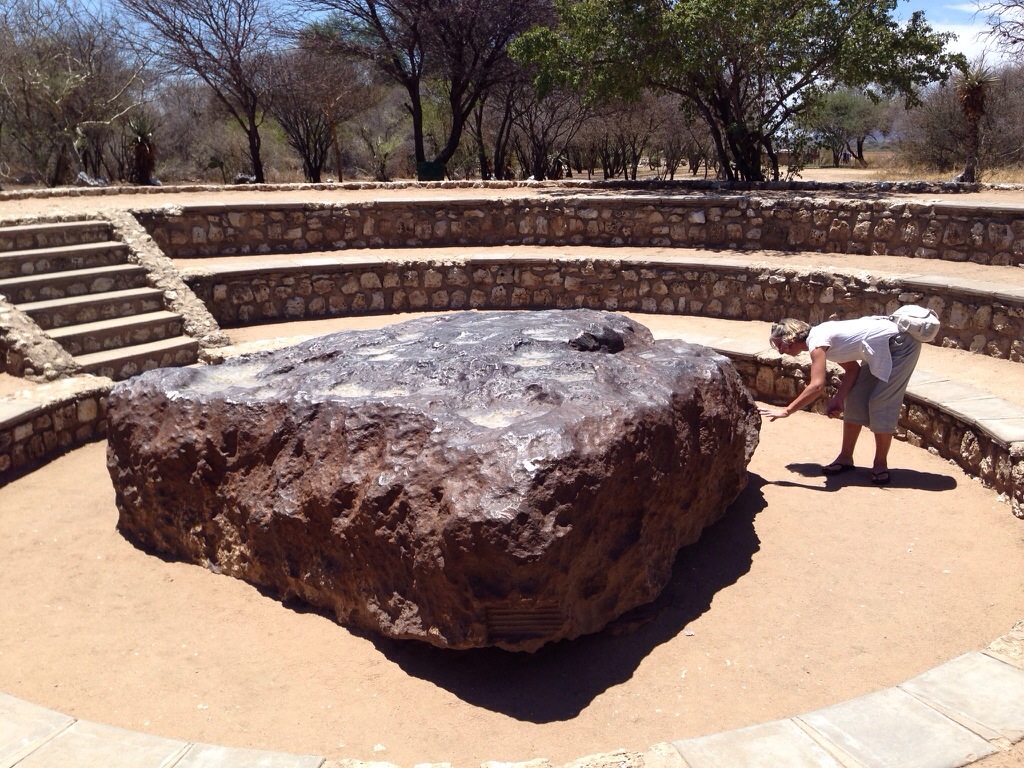
There were a number of tours available from this area out to ‘Bushman’ villages that we had heard about from various travellers we have met in recent weeks.
We decided not to go for a number of reasons:
1) we feel uncomfortable with the thought of arriving like ‘spectators’ to view how these remote tribes live
2) there’s a view that says that these tourist visits actually discourage the remote people from providing for themselves
3) if the people don’t actually live like that (and it’s a ‘staged’ recreation for the tourists) then we’re not interested in seeing it anyway.
Although we undoubtedly missed some really unusual photo-opportunities, the more I think about it, the more sure I am that we made the right choice.
Instead, we headed south-west, back towards the centre of the country and Damaraland, on our way to the Skeleton Coast.
As everywhere we have been in Namibia: beautiful country, excellent facilities, wonderful night skies, friendly people.
We camped in Khorab Safari Lodge at Otavi.
We camp because the lodges themselves are pretty expensive (between $150-$500 per night) and because we can generally use all the facilities – and then get away from the tourists to a lovely, remote, empty campsite.
This lodge is built on a Calcite plain and looks like someone has a nice lawn but has spent a fortune building a rockery (using worn-out giant teeth).
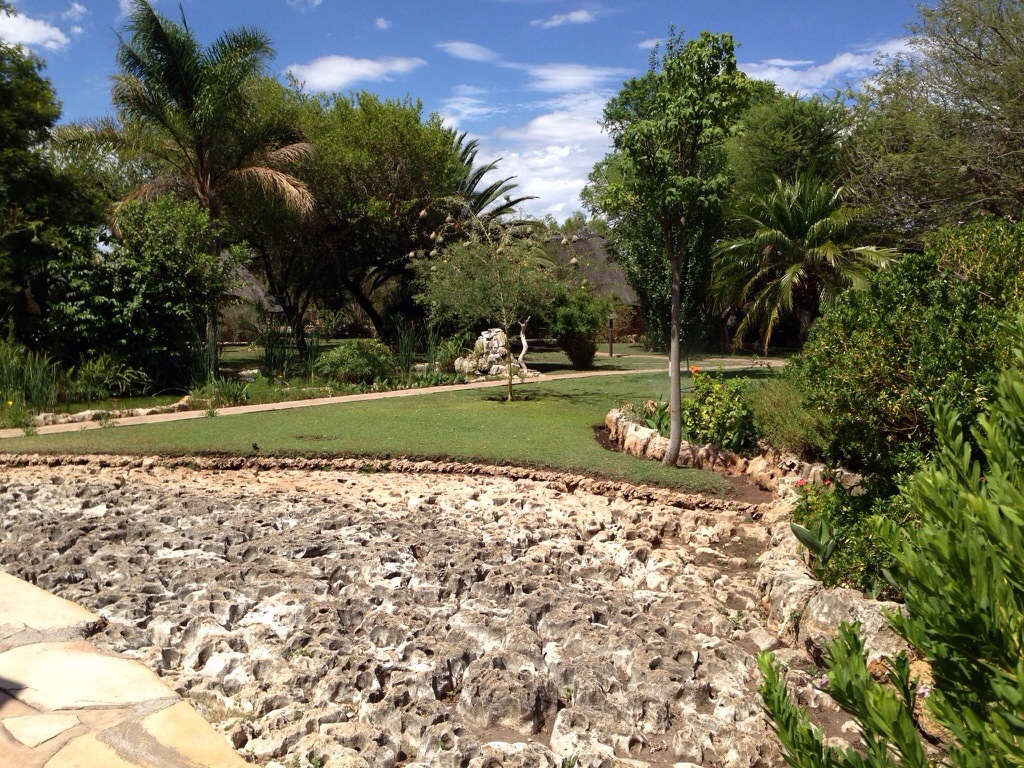
In fact the inverse is true.
The ‘rockery’ is the Calcite bed that lies only 2-3 inches below the dusty plain (they’ve swept the dust & sand away) and they’ve spent a small fortune importing topsoil to create the lawn areas.
It’s VERY rare you see grass around Namibia – soil is precious, water is hard to come by – it’s hardly rained for a couple of years now and they are experiencing drought symptoms.
Nevertheless everywhere is very clean and they do their best to provide all the facilities you could wish for.
Some of the campsites are beautifully located.
But…
Top Tip:
Always carry toilet paper with you.
There’s usually hot water – by whatever means…
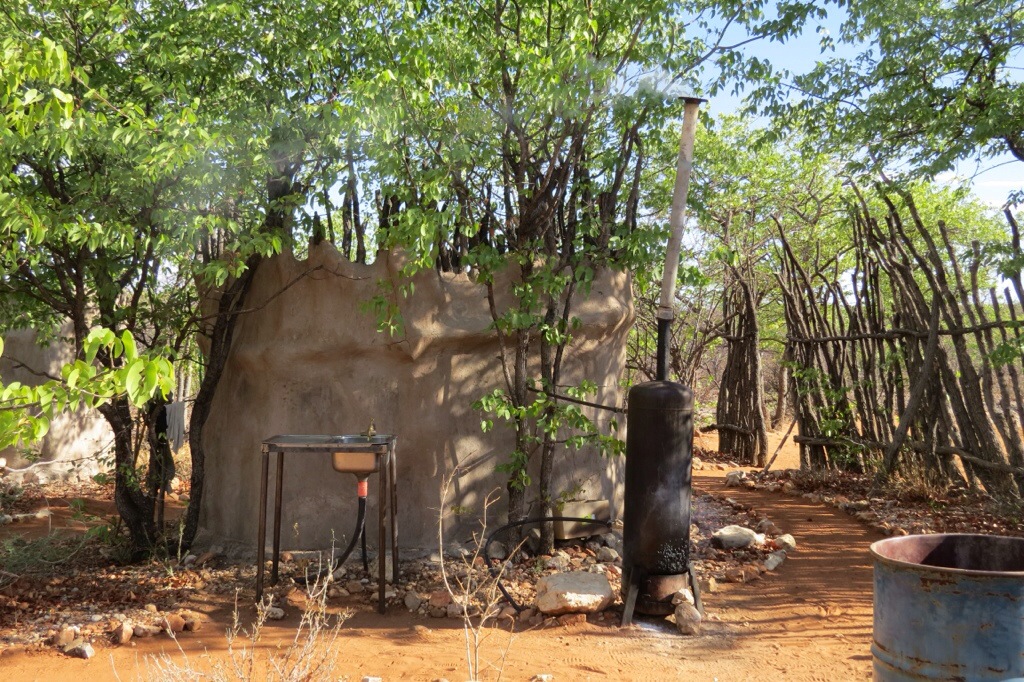
…and some of the facilities have real character…
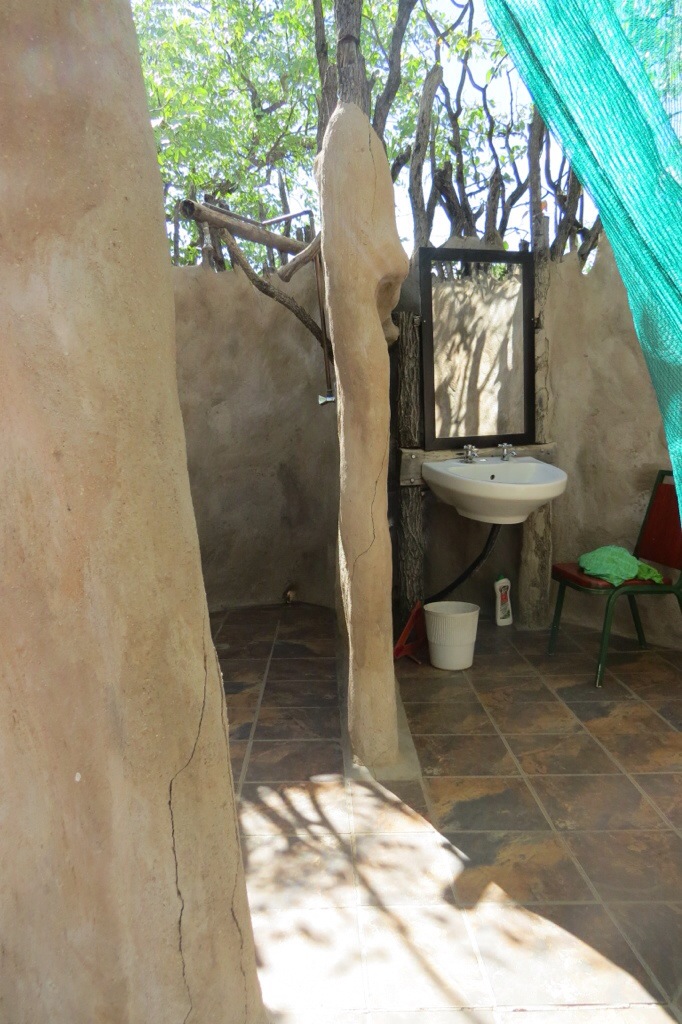
…but they can occasionally lack some of the essentials.
Like doors…
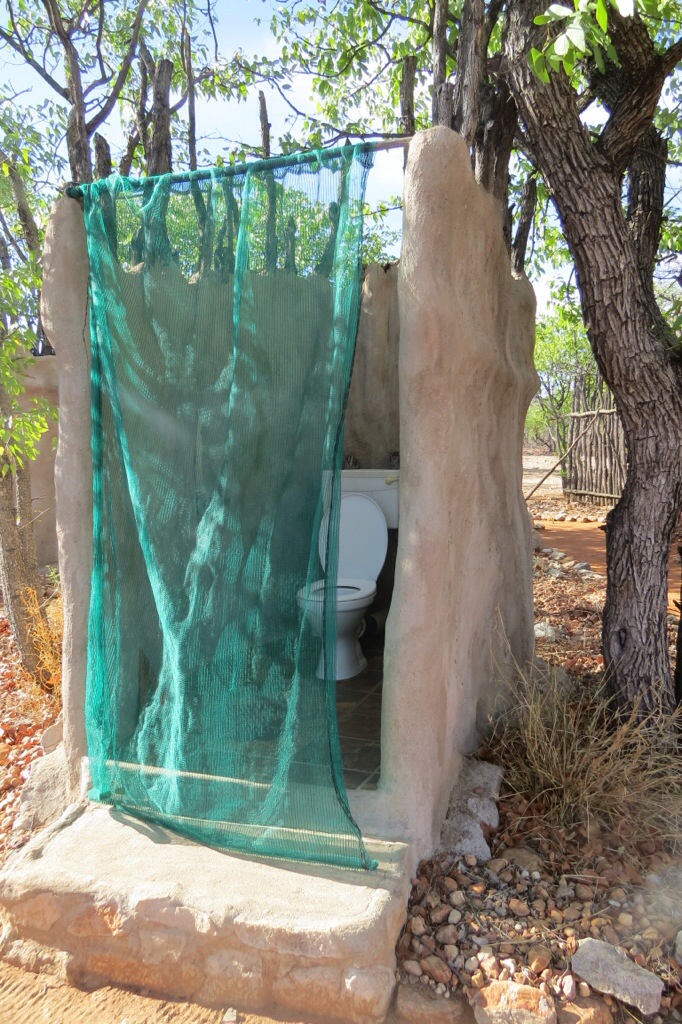
…and paper.
When the only paper you’ve got in your pocket is Namibian $100 notes, even at the current exchange rate, the situation gets expensive fast.
